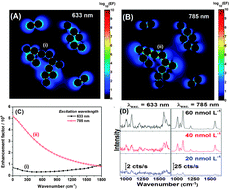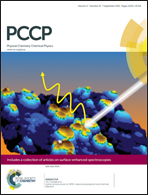Critical assessment of enhancement factor measurements in surface-enhanced Raman scattering on different substrates†
Abstract
The SERS enhancement factor (SERS-EF) is one of the most important parameters that characterizes the ability of a given substrate to enhance the Raman signal for SERS applications. The comparison of SERS intensities and SERS-EF values across different substrates is a common practice to unravel the performance of a given substrate. In this study, it is shown that such a comparison may lack significance if we compare substrates of very distinct nature and optical properties. It is specifically shown that the SERS-EF values for static substrates (e.g. immobilized metallic nanostructures) cannot be compared to those of dynamic ones (e.g. colloidal metal nanoparticle solutions), and that the optical properties for the latter show strong dependence on the metal–molecule interaction dynamics. The most representative experimental results concerning the dynamic substrates have been supported by generalized Mie theory simulations, which are tools used to describe the substrate complexity and the microscopic information not usually taken into account.

- This article is part of the themed collection: Surface-enhanced spectroscopies

 Please wait while we load your content...
Please wait while we load your content...